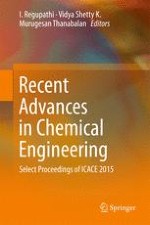2016 | OriginalPaper | Chapter
Simulation of Hydroperoxide Process for the Production of Propylene Oxide
Authors : V. Vaishali, P. R. Naren
Published in: Recent Advances in Chemical Engineering
Publisher: Springer Singapore
Activate our intelligent search to find suitable subject content or patents.
Select sections of text to find matching patents with Artificial Intelligence. powered by
Select sections of text to find additional relevant content using AI-assisted search. powered by
